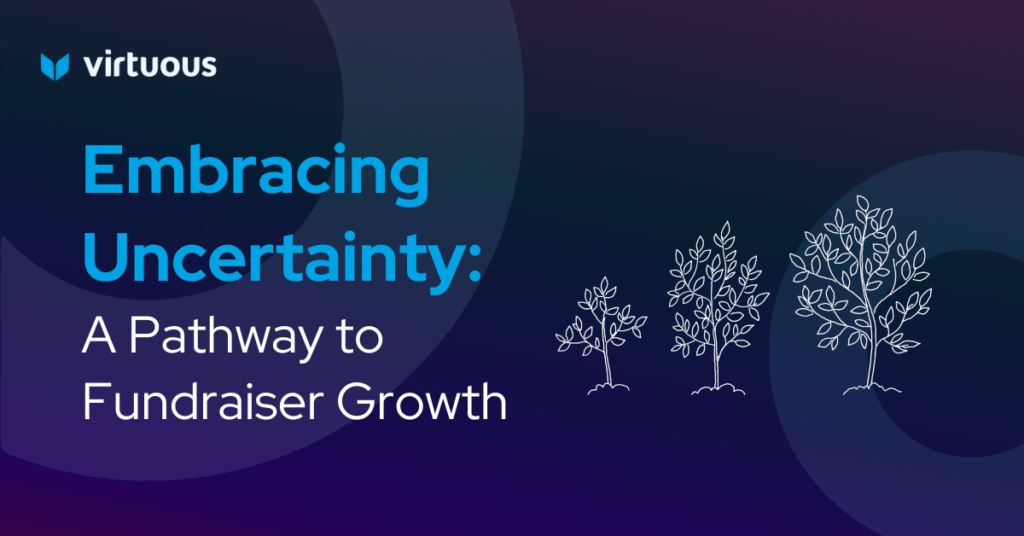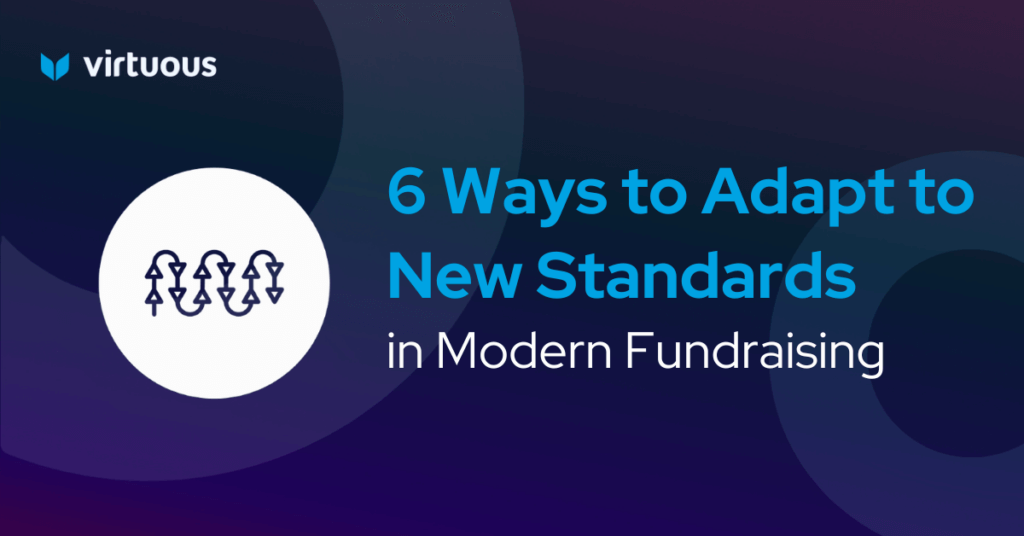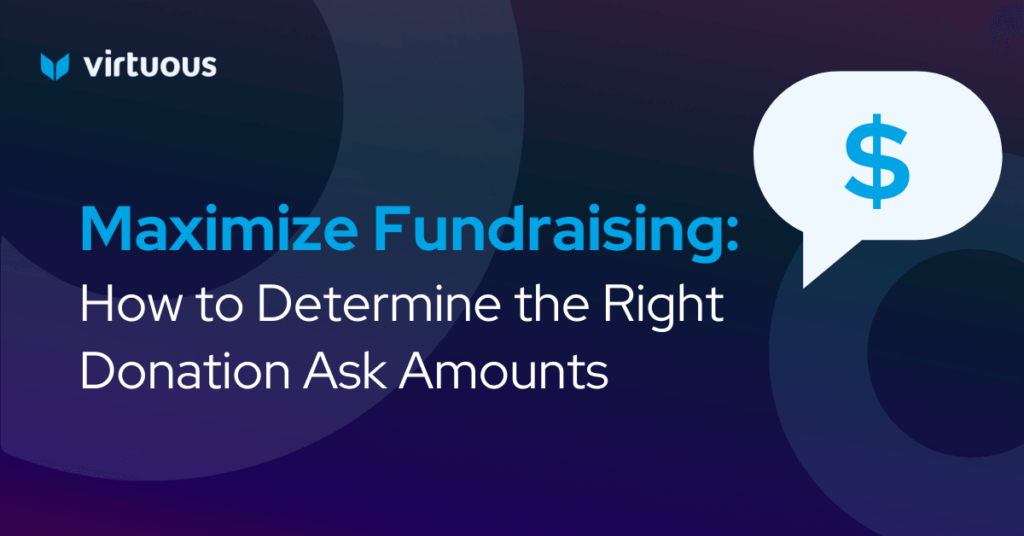Go beyond transactional relationships with dynamic donor journeys. Donors offer their support because they are passionate about the impact of your mission. But if their only interaction with you is during active fundraising campaigns, it risks feeling impersonal and transactional. A dynamic donor journey changes this narrative, offering them an experience that is distinctly tailored to their behavior, interests, and motivations. Dive in to discover how dynamic donor journeys can turn casual supporters into lifelong advocates—deeply connected to your cause and its success.
Through responsive fundraising, you’re taking your relationships with donors past just transactional—you’re transforming them from simple donors into long-term advocates. In this blog, we’ll explore how you can nurture these relationships through a responsive approach to fundraising, opening the door for them to become monthly supporters, fundraisers, volunteers, and more.
The moment someone interacts with your nonprofit organization is the moment their donor journey begins. The digitally-driven world we live in is riddled with opportunities for multichannel fundraising, offering several pathways to connect with those who matter most to your cause.
Maybe they stumbled upon a heartfelt video on social media. Perhaps a captivating story in their inbox caught their eye. Or maybe they were inspired by a friend’s passionate plea.
No matter how someone discovers your organization, seize the opportunity to turn that initial spark of interest into sustained support through engaging donor journeys. Thoughtfully crafted donor journeys that reflect donor interests and motivations are the key to increasing your donor retention rate.
The Donor Journey Shouldn’t Stop at the Point of Conversion
There are over 1.5 million nonprofits in the US, which gives donors a wide array of causes to choose from. Between both nonprofit and consumer brands vying for your supporters’ attention, how can you stand out?
Donor journeys are your ticket to captivating them with meaningful experiences that deepen their connection to your mission. But donor journeys aren’t one-and-done efforts that end immediately after you receive their generosity.
These transactional interactions tend to feel impersonal to supporters. Especially if don’t receive any follow-up about their donation or if they stop hearing from you altogether, it’s pretty unlikely that your mission will ever cross their mind again.
Instead, these activation points should be a springboard for building genuine connections and inspiring continued advocacy.
Download the Donor Journey: This ebook gives you a step-by-step guide for building a donor journey. We’ll also help you create a map for each donor segment, which will act as a daily reminder to your entire team of who your target audience is and how you can reach them.
Don’t Let the Donor Journey Be Conditional
Nobody wants to feel like a walking ATM. While likely unintentional on your nonprofit’s part, this can often be the case when the only time supporters hear from you is to ask for money. This is where donor journeys can help advance stewardship.
Communicate with your supporters in a way that resonates with their passions, not just your fundraising goals. Rather than overwhelming them with fundraising asks, add some variety to your communications schedule—beneficiary stories, upcoming community events, educational content related to your cause, surveys to gauge their interest areas, etc.
By fostering this two-way street, you create an engaging and welcoming space that nurtures:
- Meaningful engagement: Donors crave connection, not just a sales pitch. Authentic communication creates a space for genuine interaction.
- Loyalty and support: When donors feel valued, they’re more likely to become long-term supporters, not just one-time contributors.
- Passion and advocacy: Happy and engaged donors become your biggest cheerleaders, spreading the word about your cause and inspiring others to join the movement.
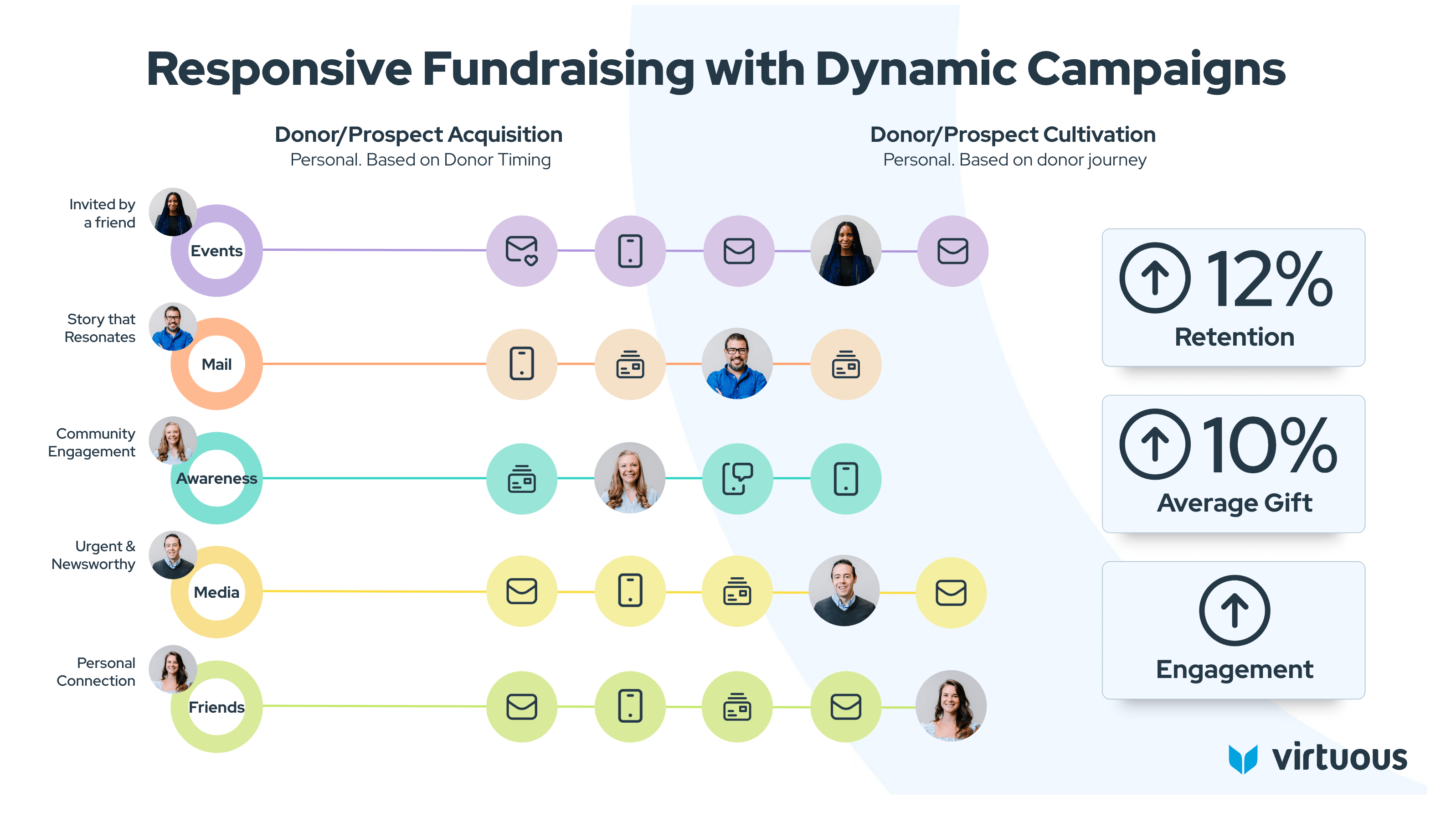
Lean on Good Data to Create a Dynamic Donor Journey
Without reliable data, it’s hard to create donor journeys that resonate. This often happens when nonprofits work within data silos, resulting in inconsistent communications across departments. When each department—be it fundraising, development, or marketing—uses a separate system, they are working on different donor information.
At worst, communications become repetitive, fragmented, and even contradictory. While unintentional on the nonprofit’s part, this disjointed approach confuses donors and can also erode the trust and credibility of your organization. To circumvent such mishaps, more nonprofits are transitioning from a static to a more dynamic, responsive fundraising mindset.
One of the core pillars of responsive fundraising is having access to good-quality data.
When you have trusted data, you can craft dynamic and highly personalized donor journeys that reflect their interests and motivations as unique individuals. But to get to this caliber of data, it calls for thorough data hygiene practices, seamless integration of data across various platforms, and a deep evaluation of your nonprofit CRM software.
Especially for nonprofits that have historically been resistant to change, it means championing a cultural shift toward a data-first mindset. Once everyone understands this necessity, you can then begin to truly embrace responsive fundraising. The responsive approach empowers your organization to cultivate deeper relationships by focusing on attentive listening, meaningful connections, strategic suggestions, and continuous learning.

“One of the greatest things I see about organizations that really embrace using data is that over time, they let go of that desire to be certain and they replace it with a desire to be curious… The curiosity is what drives connection and interests, and new ideas,” Kelly Hecht, Team Lead, Industry Advisors – Nonprofits of Amazon Web Services, said in a webinar on dismantling data silos.
How to Build Dynamic Donor Journeys That Lead to Long-Term Advocacy
Dynamic donor journeys ditch the generic approach and create experiences individualized for each donor. This means communication isn’t sent on a time-based schedule. Instead, messages are triggered based on actions the donor takes—like registering for an upcoming webinar or downloading an educational whitepaper.
This responsive approach keeps your mission top-of-mind when it matters most. By fostering a sense of connection and showcasing the impact of their support, you can transform one-time donors into passionate advocates for your cause.
Continue Learning About Your Donor
Getting to know your donors requires a consistent effort, and it calls for all hands on deck. Engaging in one-on-one conversations, reviewing survey responses, and monitoring online interactions are key components in continuously learning about your donors.
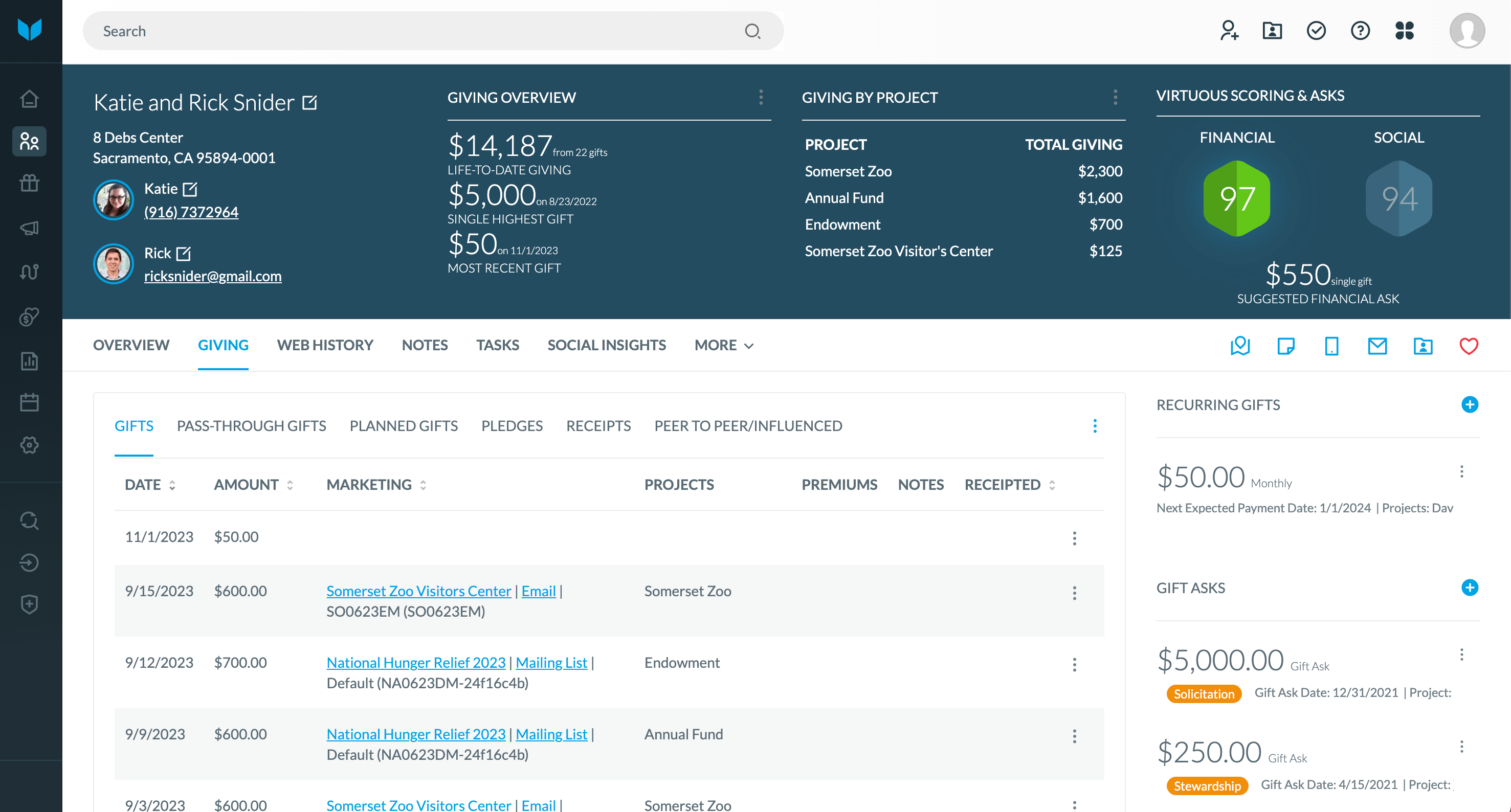
All of the information should be regularly updated in your responsive nonprofit CRM. Inputting critical donor information in your CRM for nonprofits makes it easier for everyone in your organization—from fundraising to development—to access the most up-to-date information.
If organizations like One for Israel didn’t consolidate their donor data into a single platform, they would struggle to maintain clear and accurate information essential for nurturing donor relationships.
“Our teams have faster access to data which enables us the ability to grow and connect with our donors,” says Joshua Massey, Operations Director of One for Israel.
Curate Donor Journey Content Based on Interests
A responsive donor management system does more than collect and store data from various platforms. The more valuable benefit is its ability to deliver intelligent CRM analytics that provide actionable insights and suggestions for donor journeys. These insights enable you to tailor content and event invitations to align with individual interests, deepening their connection to your cause.
For instance, let’s say someone who has never given before showed interest in the housing crisis in their local community. You know this because they attended a webinar on the topic and clicked on related articles on your website.
With this knowledge, gleaned from your CRM’s analytics, you can strategically target them with relevant content, such as updates on your housing initiatives, invitations to related events, or opportunities to contribute to specific projects. This personalization moves them from passive observers to active participants in your cause.
For Lahai Health, moving to a more responsive CRM platform has empowered the team to make more informed content decisions for their communications, resulting in a 38% increase in annual revenue.
“People feel much more connected to Lahai than they did before. Some of that is the content you put into it, but some of it is that we have the means to be sending things out. People feel much more connected to us, and that’s where we’ve gone from four major donors to a dozen by building relationships,” explains David Eller, Executive Director of Lahai Health.
Create efficiency with automated workflows
While manual recognition is powerful, harnessing the power of your CRM with built-in fundraising automation unlocks a whole new level of engagement. With CRM automation, you’re crafting highly personalized interactions with your donors at scale.
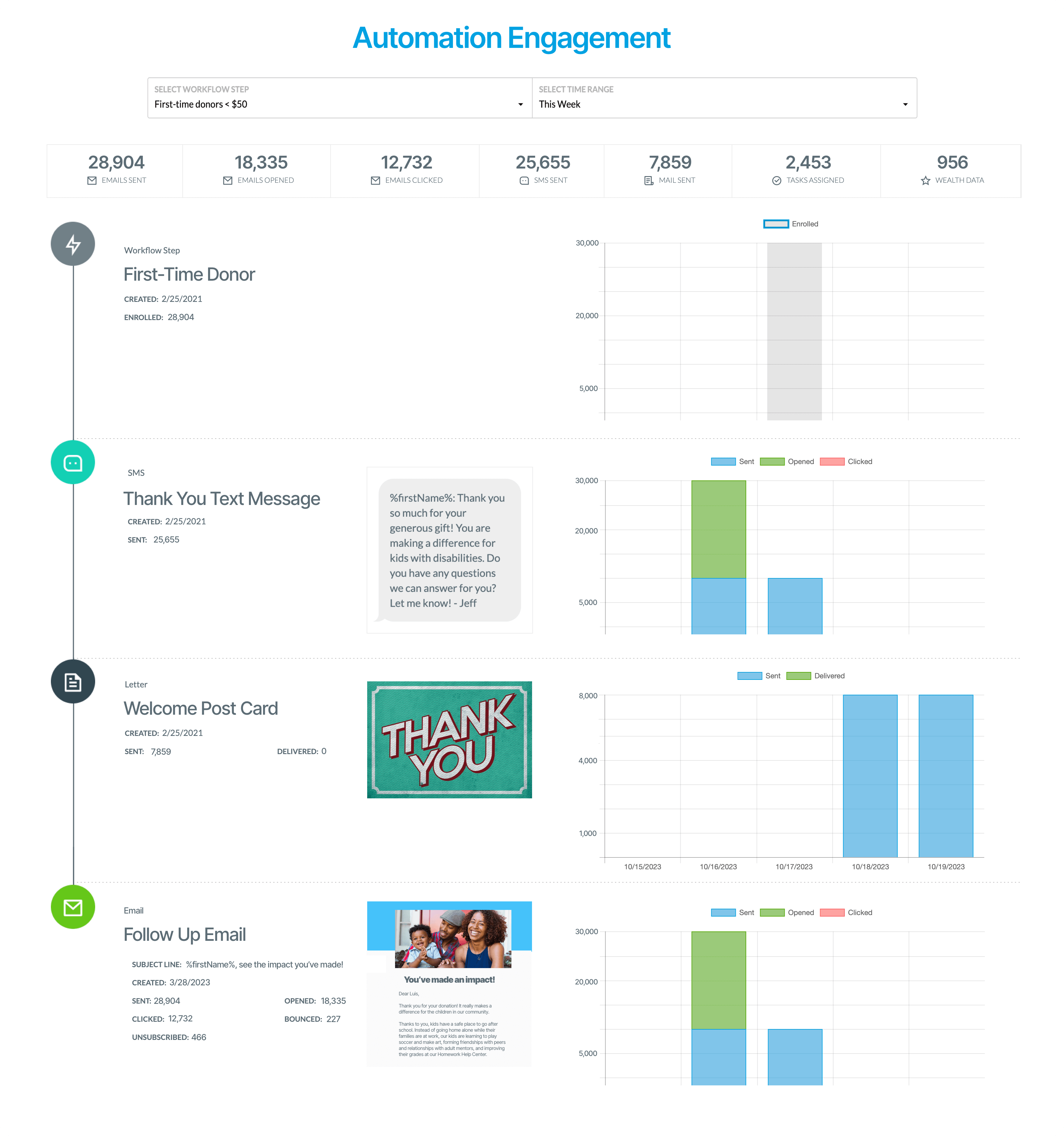
Marketing automation for nonprofits can streamline processes like sending personalized thank-you messages, launching a new donor welcome series, or moving donors into different journeys based on their giving behavior. It ensures that no meaningful engagement opportunity is missed, which is especially critical for organizations like Charlotte Rescue Mission.
“It’s all about creating connections. Everyone that completes a first-time donation receives a series of three emails that helps educate them and gives us a chance to talk more about our programs,” says Lea Love, Manager of Development Operations at Charlotte Rescue Mission.
Communicate Well—and Often
Regular, meaningful communication is key to keeping donors engaged. But it’s more than just blasting out generic appeals and newsletters; it’s embracing a multichannel fundraising approach and reaching donors where they’re most active and receptive.
Whether they’re more responsive online or offline, this multichannel approach ensures your message cuts through the noise. By tailoring your communication to each channel, you keep your donors informed and engaged.
Remember the power of donor segmentation using CRM analytics. This allows you to craft messages that resonate with each donor’s interests and preferred communication channels. The result? a more engaging experience for your donors and a dynamic fundraising campaign.
For the World Association of Girl Guides and Girl Scouts, gaining deeper insights for better segmentation really made a difference. Inga Pikse, Head of Philanthropy and Individual Giving, says, “Now we have the queries. We can segment by country, by giving level, and by history. It’s all there at our fingertips– two clicks away and we see it. So it’s fantastic.”
Don’t Just Ask for Money
Don’t get us wrong: Donations help fuel your mission. But when you constantly ask donors for money, this creates a transactional relationship that doesn’t feel genuine. Touchpoints across donor journeys should include timely fundraising appeals, but they should also be filled with content they find valuable, such as:
- Success stories: Show them the real-world impact of their generosity. Highlight success stories that showcase how their contributions are making a difference.
- Education around your mission: Engage them on topics related to your cause. Share educational content, host webinars, or invite them to participate in advocacy efforts.
- Non-monetary involvement: Provide opportunities for volunteers to donate their time and skills. This fosters a sense of ownership and strengthens their connection to your mission.
By fostering a sense of partnership and showcasing the true impact of their support, you can transform one-off donors into true advocates.
Diversify Donor Journey Pathways to Support
When you have a supporter who truly believes in the impact of your mission, they will want to do more than just donate. They want to be a part of something bigger: a thriving community that evokes more change in the world.
By offering various pathways to support, you cater to different preferences and capacities. When they have more opportunities to get involved, donors will feel empowered to take on a more significant role within your organization.
Here are some other ways they can get involved:
- Volunteer opportunities: Match donor skills and interests with volunteer needs. These support pathways allow them to contribute their time and expertise directly to your mission, but they can also give your team additional hands-on support, like writing thank-you cards or securing event sponsorships.
- Advocacy: Equip donors with resources and tools to become vocal advocates for your cause. This could involve contacting legislators, spreading awareness on social media, or even organizing community events.
- Event participation: Events are a great way to rally your community around a good cause. Fundraising events, workshops, or educational seminars all provide opportunities for donors to connect with like-minded individuals, deepen their understanding of your work, and contribute through event registration or participation fees.
- Peer-to-peer fundraising: Let your mission champions help you with fundraising. Make it easy for them to create peer-to-peer fundraising campaigns, empowering them to call on their networks and raise additional support for your cause.
Recognize Every Action a Donor Takes
Donor journeys don’t expire after your fundraising campaign concludes. They’re dynamic experiences that require consistent communication to cultivate lasting relationships. Without ongoing engagement, their interest in your mission can easily fade.
Keep that passion alive by acknowledging and celebrating every interaction a donor has with your organization. It’s about recognizing their value as a partner in your mission—not just thanking them for their donation.
Here’s how to weave recognition into your dynamic donor journeys:
- Celebrate every action: A donation, attending an event, sharing your content on social media—each action deserves recognition. This could be a simple thank-you email, a shoutout on your social media platforms, or a do-it-big with a mention in your newsletter.
- Tailor your appreciation: You’ll want to do more than send one bulk email and call it a day. Personalize your recognition whenever possible. Highlight the specific action they took and how it contributes to your mission.
- Acknowledge donors immediately: Don’t wait too long to thank donors. While your mission is still top of mind, make it standard practice to send a thank-you email within 24-48 hours of their token of support.
- Mark milestones: Did a donor reach their annual giving goal? Have they been a supporter for five years? A personalized message or phone call acknowledging these milestones shows your appreciation for their long-term commitment.
Next step: Leverage AI-Powered Tools
To help you become a more responsive nonprofit, we’ve adopted a maturity model framework, a step-by-step guide often used by organizations to benchmark their current level of maturity against industry best practices.
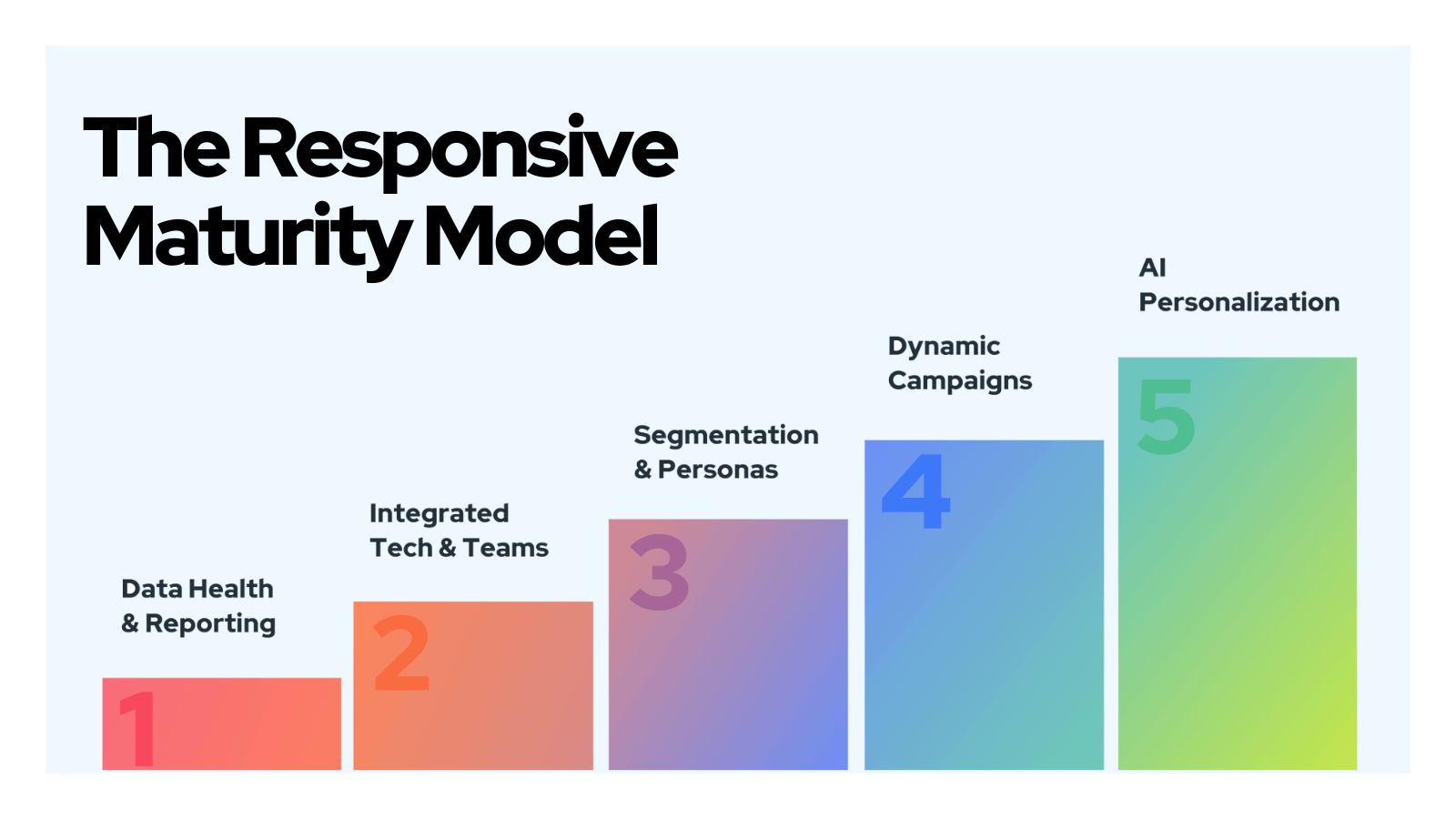
As you progress across each step, you’ll see increased team effectiveness, increased average donor retention and gift size, decreased staff burnout, improved advocacy, and improved donor acquisition metrics.
Download The Responsive Maturity Model: 5 Building Blocks to Drive Increased Generosity to learn the five building blocks of responsive fundraising.

